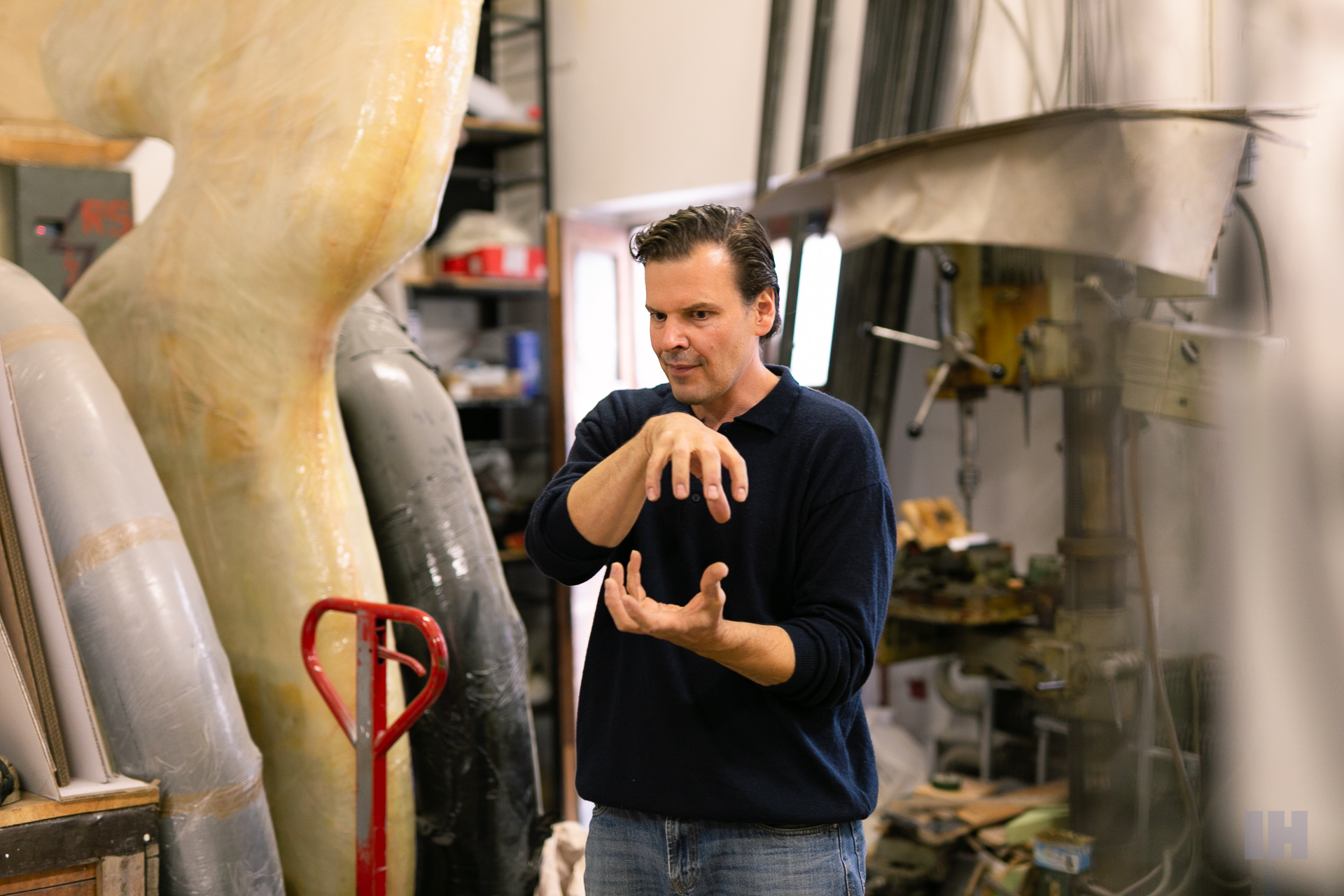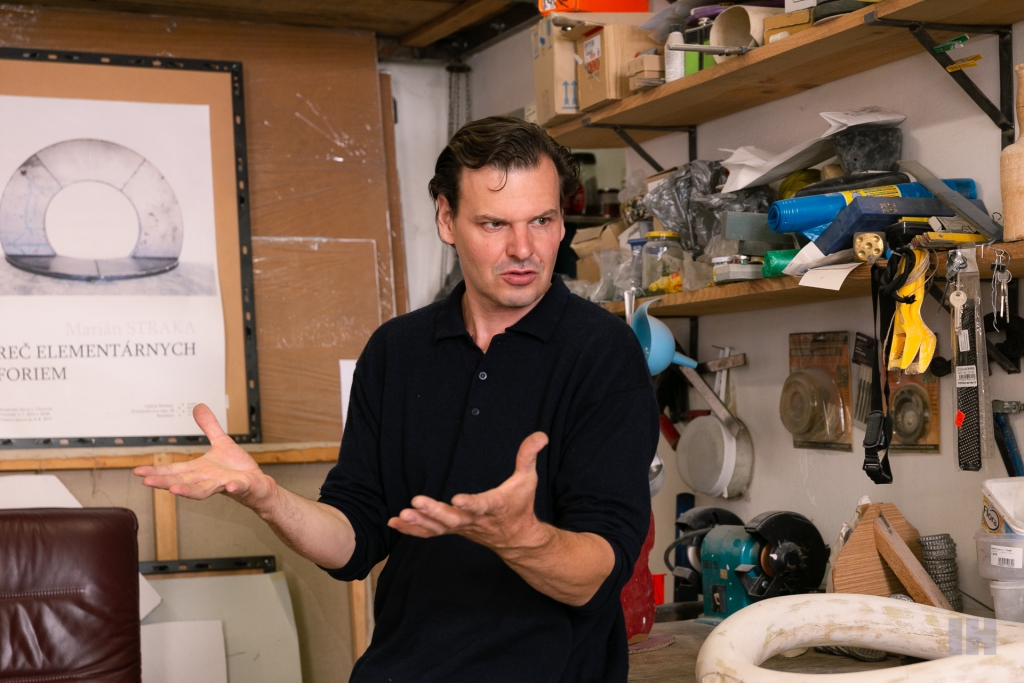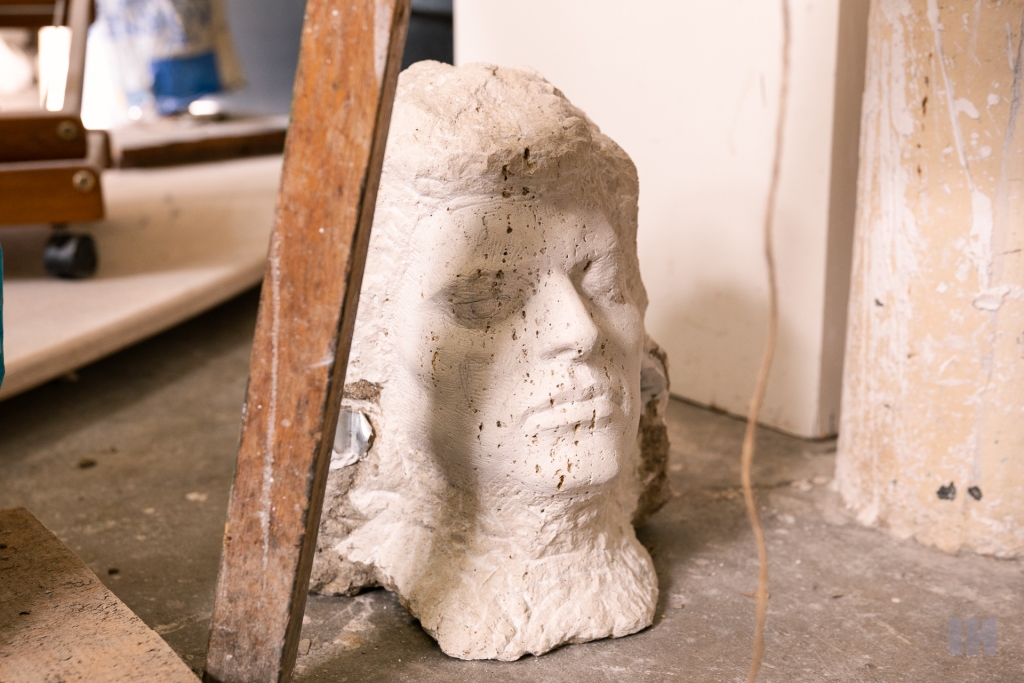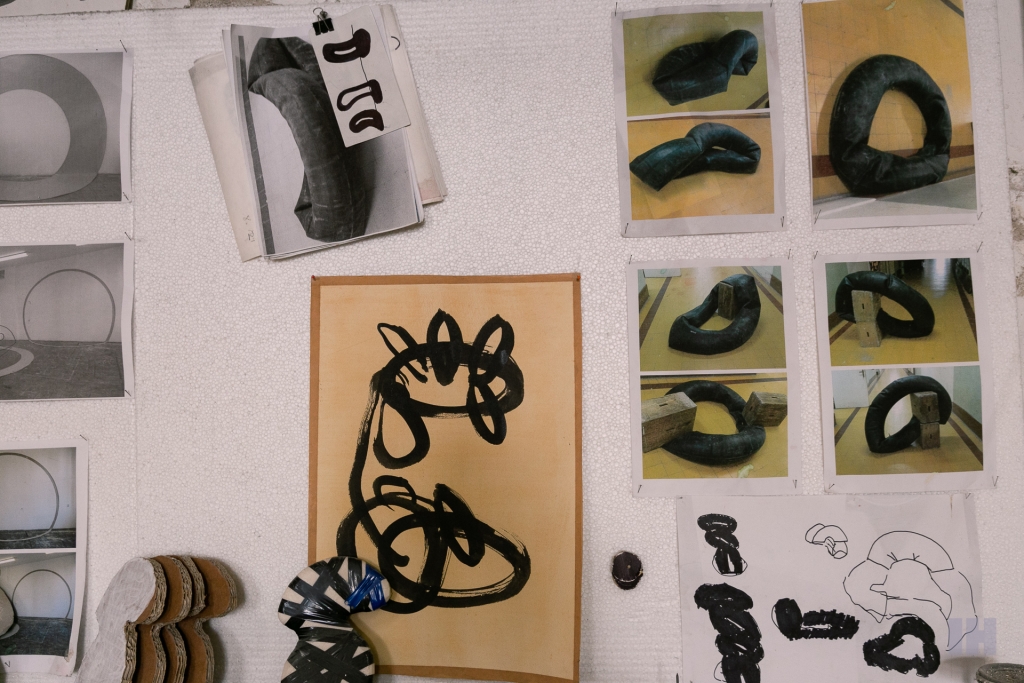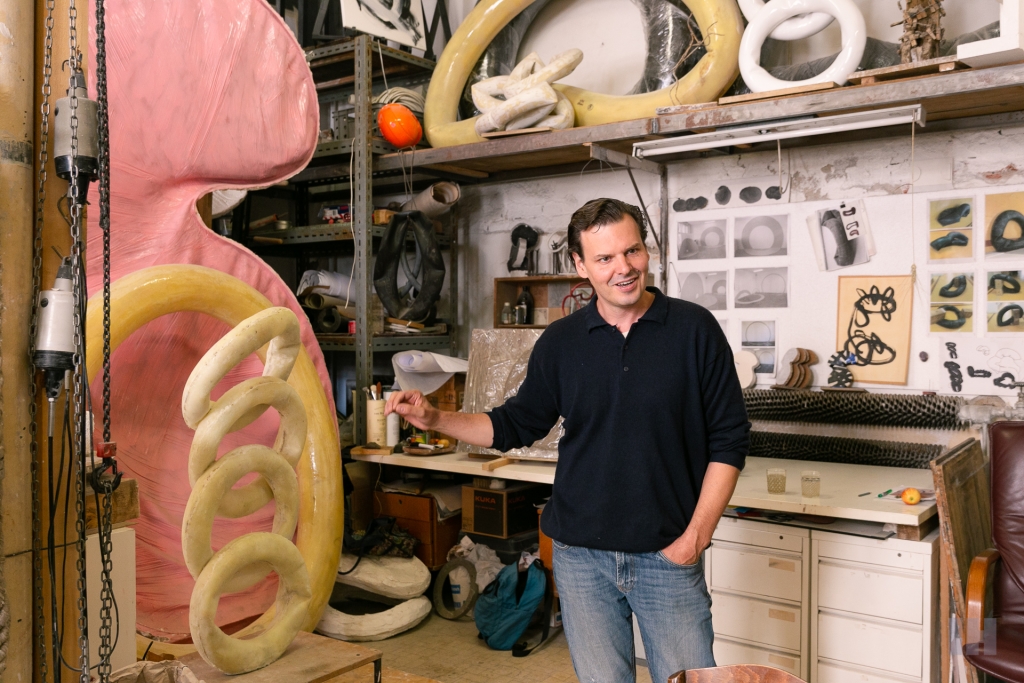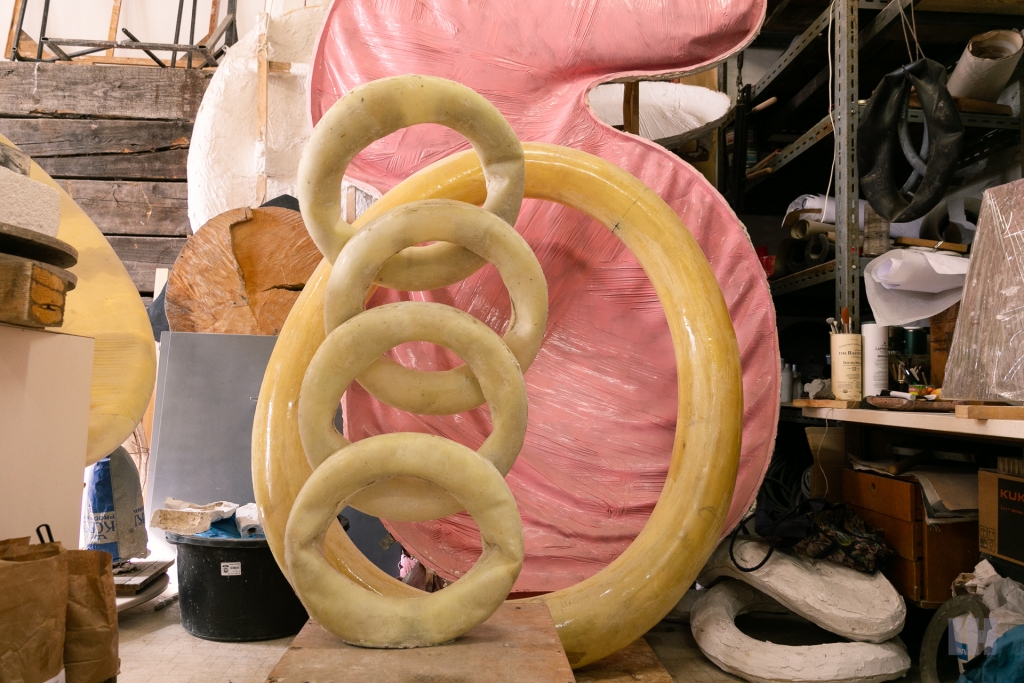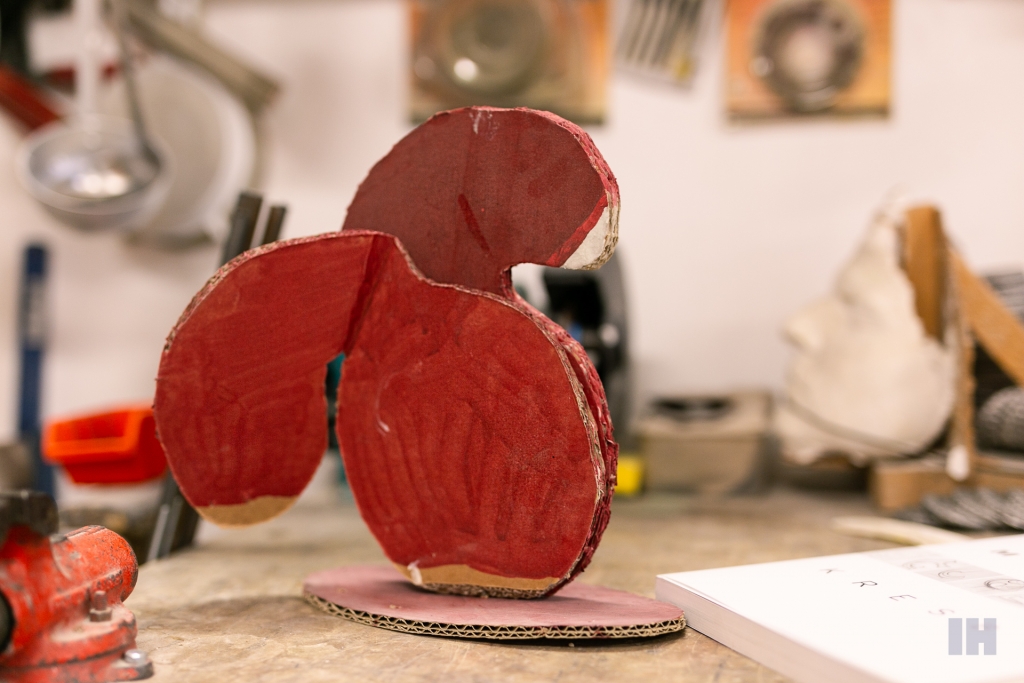Artistic diversity and the return to figural sculpture can help young emerging artists, says sculptor Marián Straka
Marián Straka is one of the first academic artists to study at the Faculty of Arts of the Technical University in Košice, which was founded in 1998. After studying at the Studio of Free Creativity, he completed his PhD. degree at the Academy of Fine Arts in Bratislava. Originally from a small village in eastern Slovakia, Belá nad Cirochou, he has exhibited both, at home and neighbouring Poland and the Czech Republic. He focuses on the themes of uprooting, loss of identity or the metaphor of gravity, which he depicts using various massive objects. However, his primary concern is the issue of form – often manifested within compressed shapes, which refer to corporeal characteristics and softness.
Stone sculpture can’t be studied here anymore
Marián Straka comes from the small village of Belá nad Cirochou near Snina. He attended the local folk art school and later graduated from the Košice Secondary School of Applied Art in the field of stone sculpture. The artist claims that he was closely familiar with fine arts and crafts since his childhood, and living in the country gave him his first contact with the processing of raw materials such as wood and metal. Thanks to this experience, later, during the break between secondary and college education, he was able to get a job in handicrafts.
Marián mentions that in the past, students used to take university entrance exams several times, especially in the art fields, where usually a very low number of students were accepted. Due to strong competition, students sometimes waited for years to be finally accepted. This was also the case of Marián, who during his four-year break worked as an assistant in modelling and chopping stone objects, for example, pedestals under statues, stones on altars and the like.
“It wasn’t what we did that was important, but to gain practice in something that was at least a little bit related to the fine arts. At that time, I needed to leave home and live in a city with which I felt a strong connection and where a lot was going on – during long evenings, me and my friends drew, modelled and photographed our works in our shared apartment. In this way, we created a portfolio for further entrance exams. When you got just a few places below the acceptance line, we considered it a small victory. One of my acquaintances was accepted on the ninth attempt. Today, it is not so often seen that students do not give up and try so many times.”
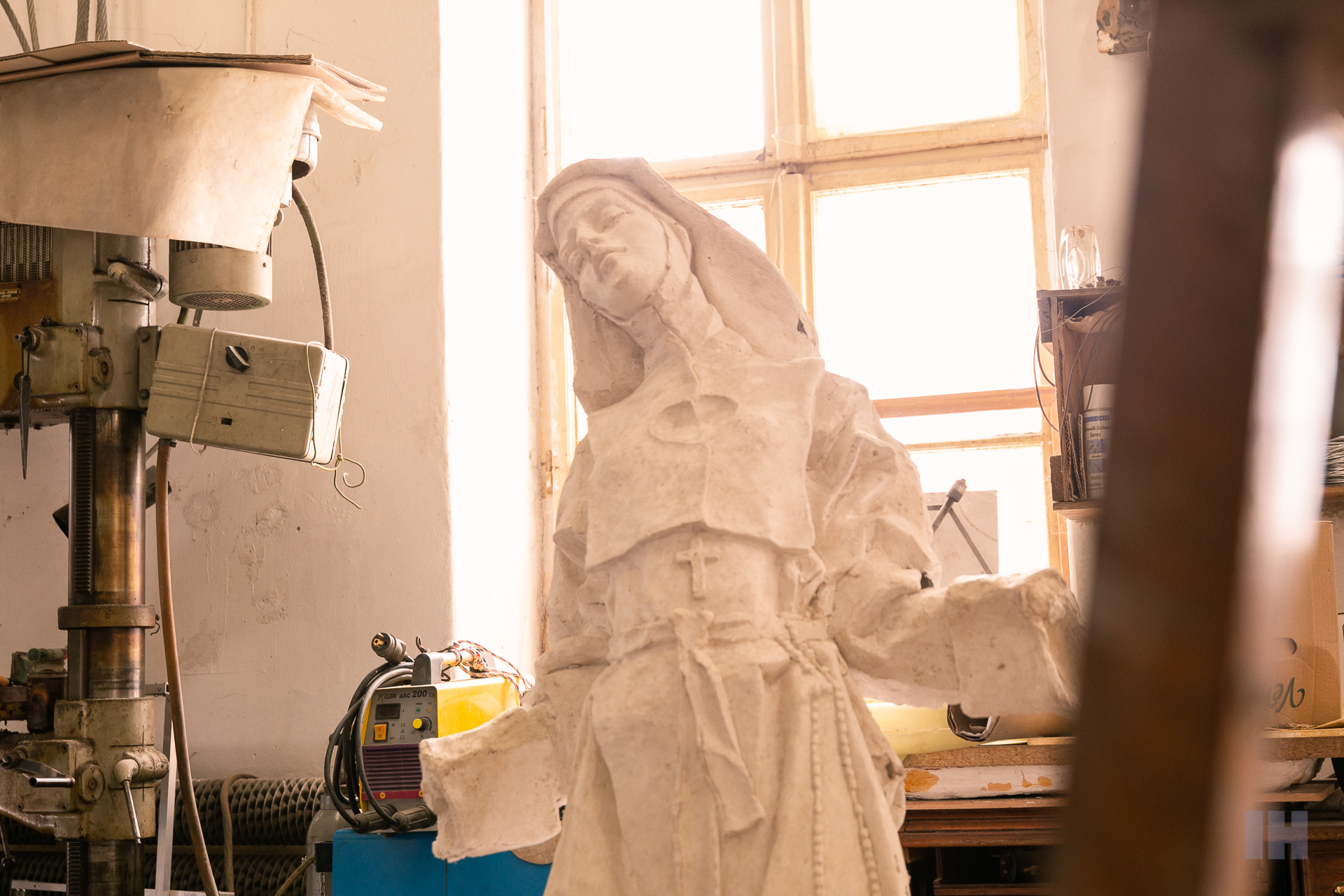
Why has art-creation been neglected in a public space?
Marián started to study in the Studio of Free Creativity of the new Faculty of Arts of the Technical University in Košice after a period of four years. The sculptor recalls that the studio (where only 6 applicants were accepted) embodied a quality teaching programme with a strong regime, which mainly focused on the then-new, interactive media arts. Today, he looks upon this tendency a bit critically – he claims that figural and classical sculpture or art, in general, requires certain knowledge and skill. This attitude is also related to the changing position of the sculpture as an art form. It is known that the regime before the revolution in 1989 supported the contracts of Slovak artists from state finances when approximately 4% of the investment in the new building was devoted to the adjacent art object.
“Painters, graphic artists, ceramicists and sculptors were able to work on official job offers at that time and were adequately paid for it. After this period, the sculpture as such became absolutely despised and students at the time began to be pushed to work on interactive installations and performances. At that time, we had to get a lot of information about it, which was not always available. This trend has not changed over the years, no new outdoor art objects are being created, nor does the legislation take care of it. Art in public space seems to have been forgotten.
It was the same with the teaching of figural sculpture – I am currently on my way from concept to sculpture, installations and environments are no longer a priority for me. An elementary sign comes to the fore. Paradoxically, artistic identity does not remain unchanged. The significant shift of plastic language into specific objects allows me to incorporate a biomorphic form in which associative psychological images are more strongly applied. They simply work more directly, with reference to the inner world of my psychic experiences and memories. Conceptual tendencies in sculpture were caused by the suppression of the classical sculpture and object in the landscape or in public space.
I believe that if the art scene were represented by several diverse creators, it would not only bring diversity, but young emerging artists would be bolder and not afraid to expand further in their works. In the years that I have devoted myself to art, I have learned that it makes sense to do things against the flow. Nowadays, very few students manage to exhibit or find employment in their field. It’s often a matter of survival, so they get a job in other sectors.”
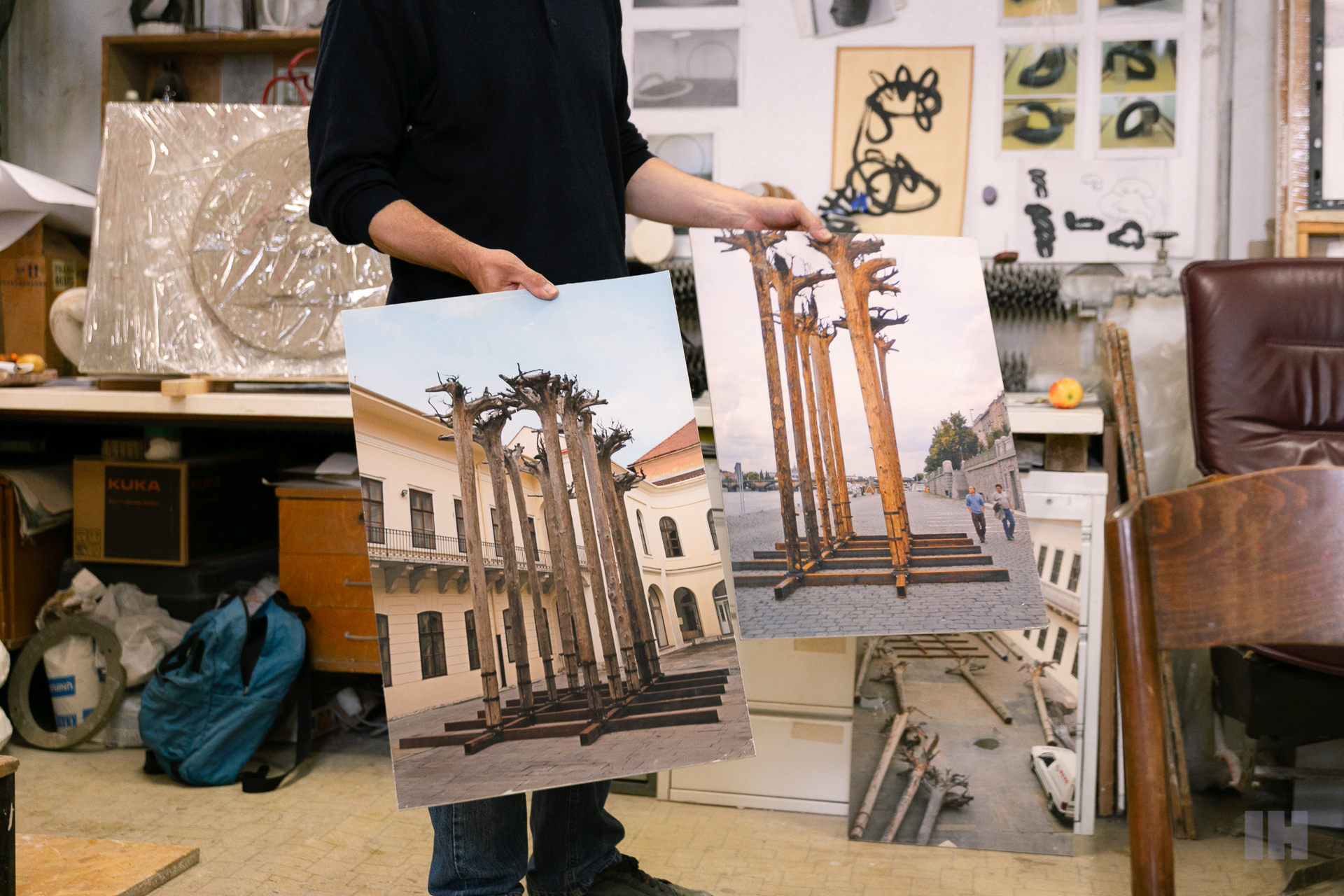
“I am convinced that everything is based on a figure, a body, a gesture. My works do not have to be realistic, but they retain a feeling of physical, soft shape, with which the recipient can identify and understand it without explanation.”
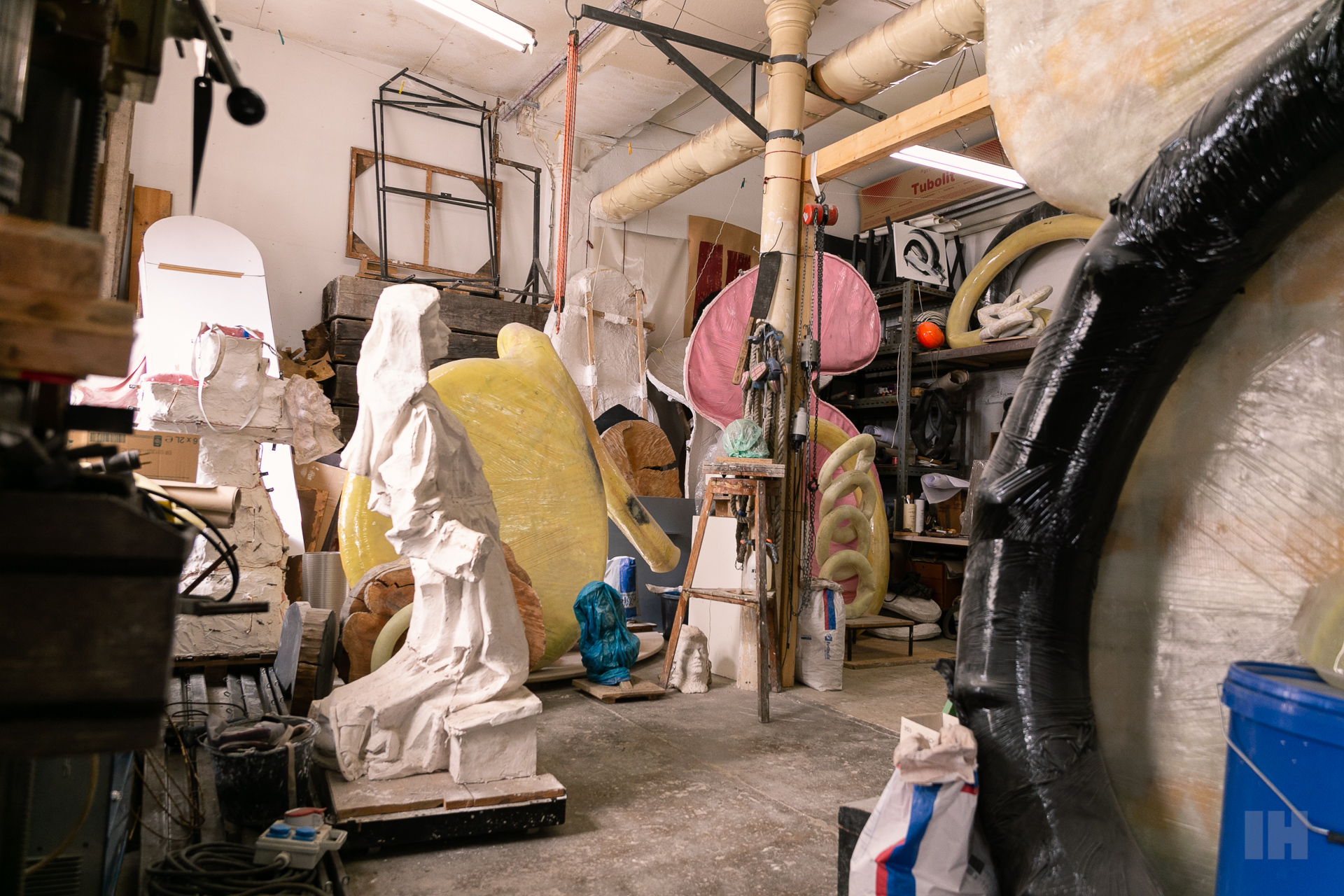
From hard materials to organic sculptures
In his artistic work, Marián Straka focuses mainly on the form of processing the topic, which is often the opposite of trends in contemporary art. According to his own words, he does not avoid ecological or political topics, but more natural to him are the search for lost identity, feelings of uprooting, metaphorical depiction of heaviness, weight and a new, different relationship between man and the installation/object. In his most impressive work, with tree branches fastened to a metal structure, he has studied how the motif of gravity affects humans. A few years ago, this installation was located in the courtyard of the East Slovak Gallery in Košice and in Prague on the Vltava embankment.
“Gradually, I began to destroy the topic and I started to focus on form, minimalism. A similar example is a structure that connected these trees together. In this installation, even without explaining its purpose, one feels depressed, aware of the heaviness it embodies. This is how I found my own language in which I communicate. I deal with soft materials, which I compress, rotate and, therefore, explore new expressions that happen to the object in various ways. I create strange shapes, I try to mummify, I work with organic sculpture. My works do not have to be realistic, but they retain the feeling of a physical, soft shape, with which the recipient can identify and understand it without explanation. He/she does not need to read the accompanying text to the exhibition – the atmosphere of the work is felt even without words. I believe that a visual artist should also deal with form in the age of interactive media arts so that he/she can also improve his/her skills in this direction and be able to express himself/herself.”
